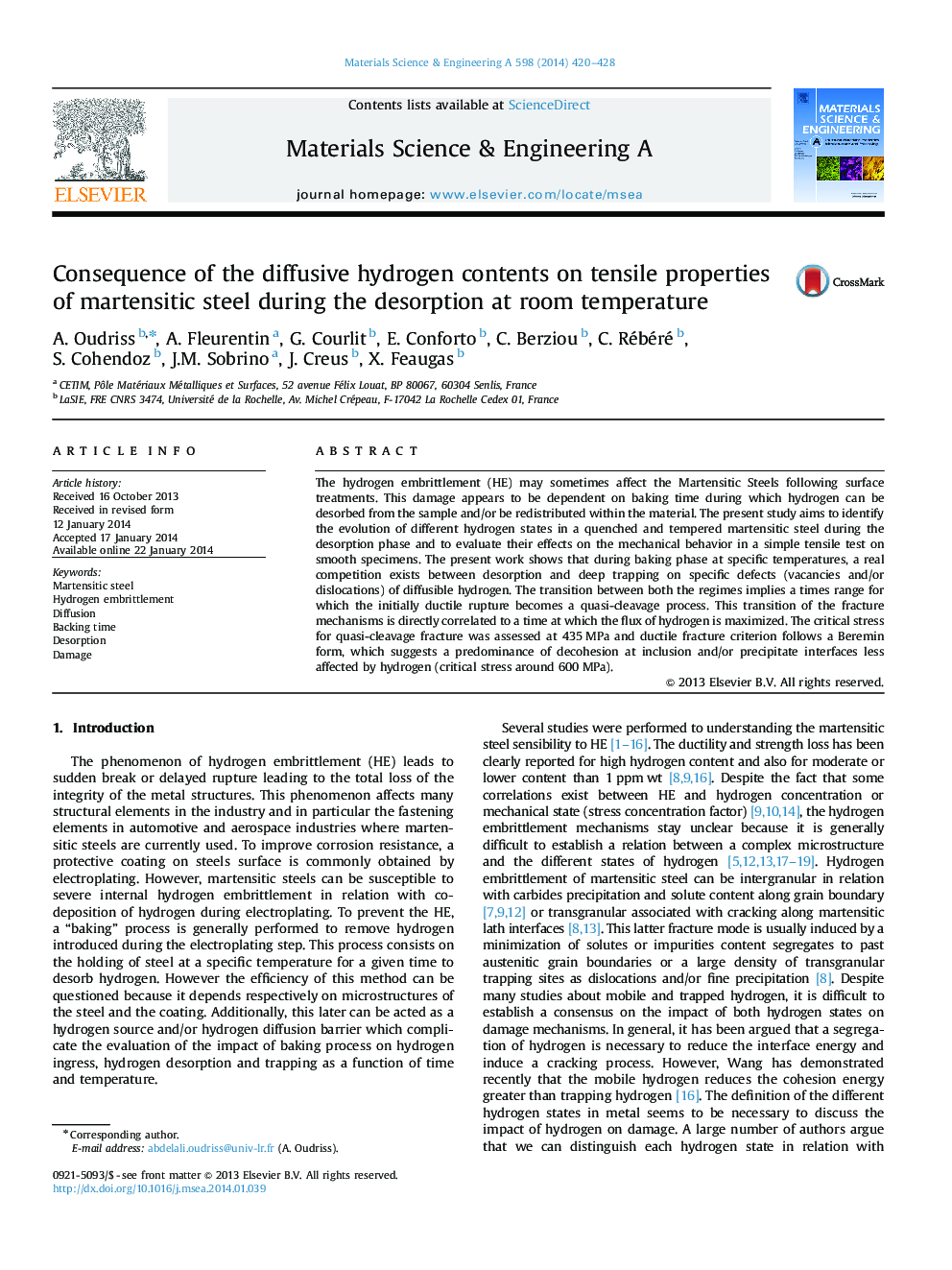| Article ID | Journal | Published Year | Pages | File Type |
|---|---|---|---|---|
| 1575381 | Materials Science and Engineering: A | 2014 | 9 Pages |
Abstract
The hydrogen embrittlement (HE) may sometimes affect the Martensitic Steels following surface treatments. This damage appears to be dependent on baking time during which hydrogen can be desorbed from the sample and/or be redistributed within the material. The present study aims to identify the evolution of different hydrogen states in a quenched and tempered martensitic steel during the desorption phase and to evaluate their effects on the mechanical behavior in a simple tensile test on smooth specimens. The present work shows that during baking phase at specific temperatures, a real competition exists between desorption and deep trapping on specific defects (vacancies and/or dislocations) of diffusible hydrogen. The transition between both the regimes implies a times range for which the initially ductile rupture becomes a quasi-cleavage process. This transition of the fracture mechanisms is directly correlated to a time at which the flux of hydrogen is maximized. The critical stress for quasi-cleavage fracture was assessed at 435Â MPa and ductile fracture criterion follows a Beremin form, which suggests a predominance of decohesion at inclusion and/or precipitate interfaces less affected by hydrogen (critical stress around 600Â MPa).
Related Topics
Physical Sciences and Engineering
Materials Science
Materials Science (General)
Authors
A. Oudriss, A. Fleurentin, G. Courlit, E. Conforto, C. Berziou, C. Rébéré, S. Cohendoz, J.M. Sobrino, J. Creus, X. Feaugas,
